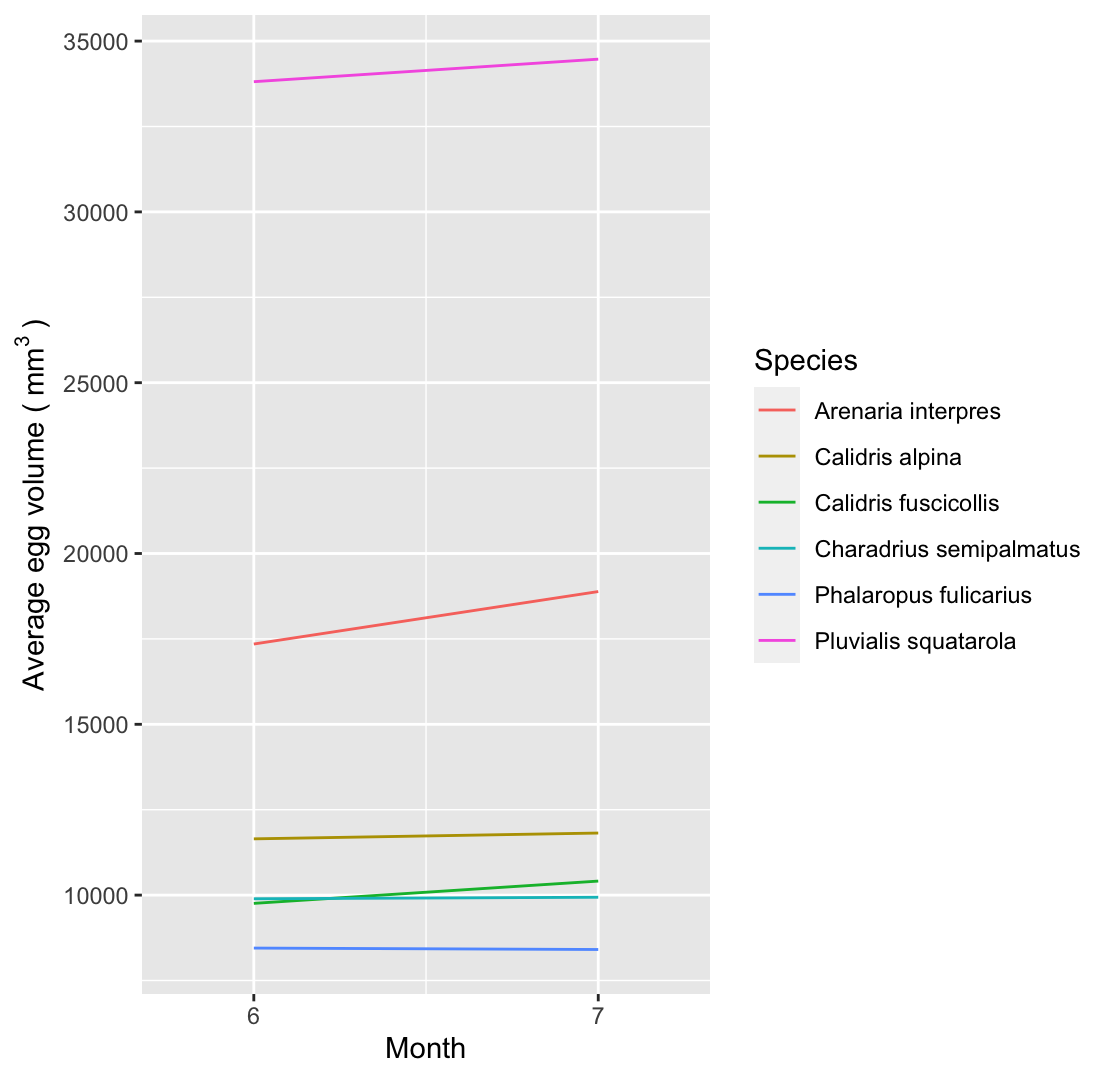Bonus Homework
Relationship between egg volume and time of the year
One might wonder if egg volumes are larger during warmer months. Indeed, in Egg size variation within passerine clutches: effects of ambient temperature and laying sequence 1, the authors report that:
Slight but statistically significant positive correlations were detected between daily temperatures (mostly mean and minimum) and egg size. The first eggs of the clutch were often affected by the temperatures occurring about a week before they were laid. These temperatures probably influence the development of the insects from eggs and pupae providing protein for the egg-forming female. The last eggs of the clutch tended to be affected by the temperatures prevailing one to three days before laying, i.e.occurring in the most intensive period of egg formation.
There are multiple factors at play here, including clutch size and laying order, and we don’t have much data to work with using our class database, but still, we can investigate if there is any change in average egg volume between the months of June and July, hypothesizing that July is warmer than June.
Please submit your SQL code and your Python or R notebook.
Step 1
Create a query to compute and group average egg volume by species and month. As before, use for volume the formula
\[{\pi \over 6} W^2 L\]
where \(W\) is egg width and \(L\) is egg length, and use 3.14 for \(\pi\). Call this table T.
Step 2
Looking at table T, you’ll notice that we have egg data for months 6 and 7 for most species, but there is one species for which there is only data for month 6. We want to exclude all such species since there will be nothing to plot for them. How to do that? Here’s a hint. First, create a query that identifies the set of species having 2 rows in T. Then, select the rows from T where the species is in the aforementioned set.
Join this reduced table with the Species table to grab scientific names, and write out to a CSV file.
Step 3
Use R or Python to plot average egg volume as a function of month, by species. An example is shown below.

Please submit your SQL code and notebook to Canvas: https://ucsb.instructure.com/courses/19301/assignments/245958
Footnotes
Mikko Ojanen, Markku Orell, and Risto A. Väisänen (1981). Egg size variation within passerine clutches: effects of ambient temperature and laying sequence. Ornis Fennica 58:93-108. https://ornisfennica.journal.fi/article/view/133071↩︎
